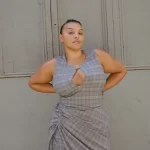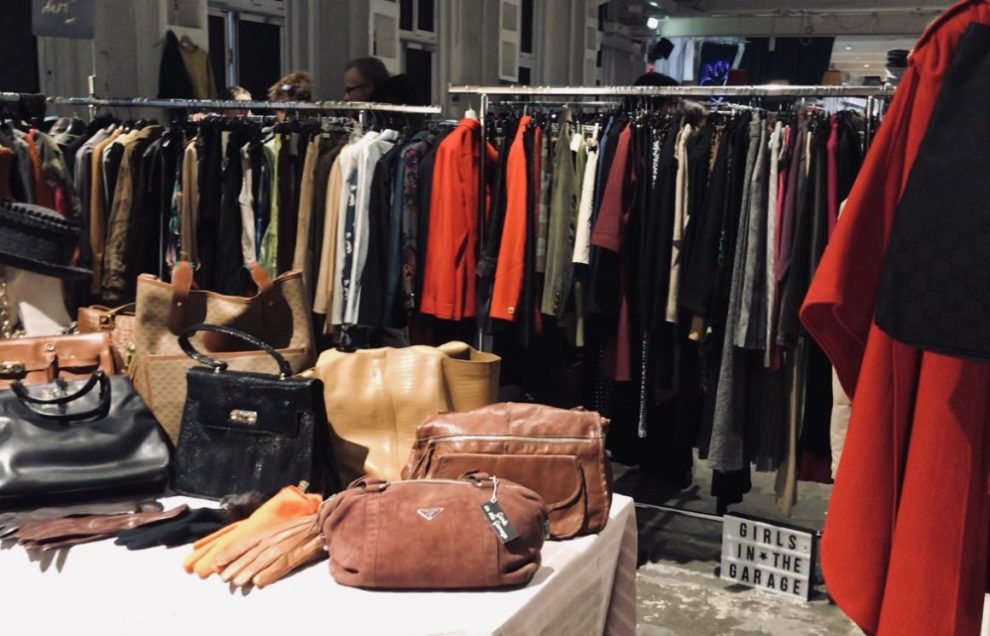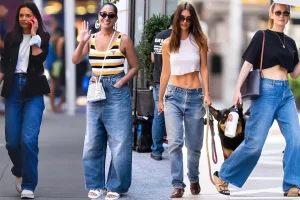Growing up in New York City, Shilla Kim-Parker realized that secondhand and vintage shops were disconnected from e-commerce after she became a mom.
“I didn’t have time to sift through a rack,” Kim-Parker remembers.
She talked to vintage business owners who felt left behind by the e-commerce industry and discovered that 95 percent of sales were offline. That nugget of information, and years of hard work, led Kim-Parker to launch Thrilling, which gives clothing a second life through a larger online network.
“We’ve already produced all this clothing that’s just sitting here in digital darkness or on its way to the landfill,” says Kim-Parker, CEO of Thrilling. “The driving force of Thrilling is to help businesses get a new source of revenue.”
And her efforts to fuel the circular economy in fashion are getting noticed.
After the last model walked the Fashion Week catwalk in September 2022, the United Nations Goals House (UNGA) and its partner, Elemental Excelerator, hosted events at Tavern on the Green in Central Park.
Kim-Parker was on hand, talking about her efforts toward the UNGA’s Responsible Consumption and Production goal. Thrilling offers just one location for small resale businesses, film and production, and costume designers to gather inventory from some of America’s brick-and-mortar secondhand vintage shops. “When I talk to my friends and family who run secondhand vintage shops, we talk about how they felt left behind by tech even though e-commerce is such a wildly available option,” Kim-Parker said.
And reusing and recycling goods is one green solution to addressing climate change. Fashion will need to halve its carbon emissions by 2030 to have a significant impact on global emissions, according to Kaley Roshitsh at WWD. Moreover, the average clothing consumer throws away 81.5 lbs of clothes every year, according to Earth.org. Almost 10% of microplastics in the oceans come from textile waste alone, and 2.6 million tons of (returned) clothes end up in landfills across the world each year, according to Earth.org.
“We have 88 months to drastically change the course of history,” said Dawn Lippert, CEO of Elemental Excelerator. “What kind of planet will we leave for our children?”
Secondhand and sustainable fashion is seeing a large growth, which is expected to reach twice the size of fast fashion stores such as H&M, Forever 21, ASOS, and SHEIN stores in the next eight years, according to Harper’s Bazaar. Fast fashion typically profits from lower quality clothes to produce quick inventory in time for a typical industry consumer’s social media drop.
The demand for quality fashion fights against fast fashion. Fast fashion is overflowing, quite literally, into dumps and flooding the markets of less developed nations. Young consumers especially see secondhand fashion as a way to get quality items for a percentage of the cost.
“Resale… became this haven for me to shop for unique pieces that I felt great in, without totally draining my checking account,” says Emily K. Schwartz, founder of The Resale Stylist. “Pieces on the secondhand market often are made from more quality materials – after all, they’re enduring several lives – so you end up purchasing higher-quality items at a lower price point, and who doesn’t want that?”
And the secondhand fashion industry is growing. In addition to Thrilling, online designer consignment shops like The RealReal, Poshmark, Vestiaire Collective, and Depop offer rare or unique contemporary and vintage designer fashion items.
The RealReal, for one, is one of the most popular designer fashion online apparel consignment shops, with the third quarter 2022 report detailing the company making $143 million. And it’s growing, with a 20% increase in sales from the same quarter in 2021. Their company values include sustainability, encouraging shoppers to resell their quality designer items to the site, and the circular economy. Apps like Poshmark and Vestiaire Collective offer a direct seller-to-consumer sales process that remains convenient for many consumers alike while the companies take a percentage of the sales to fuel their profits.
Poshmark takes a different approach, using its consumer-to-consumer platform of 100 million people, which Kelly Mason, director of communications at Poshmark, describes as a culture of ‘sellers helping sellers,’ where people collaborate to support one another’s business, share their selling tips and advice, and shop directly from one another and support each other financially.”
That’s still only a consumer-to-consumer model that neglects many of the mom-and-pop thrift shops on local towns and streets. The model also relies heavily on the consumer to decide to shop sustainably. Slow fashion, a.k.a. sustainable fashion, features the resale and reuse sustainability model. Its estimated worth is set at approximately $84 billion, while fast fashion is projected to reach $40 billion, writes Amy de Klerk of Harper’s Bazaar.
Source: outrider




























